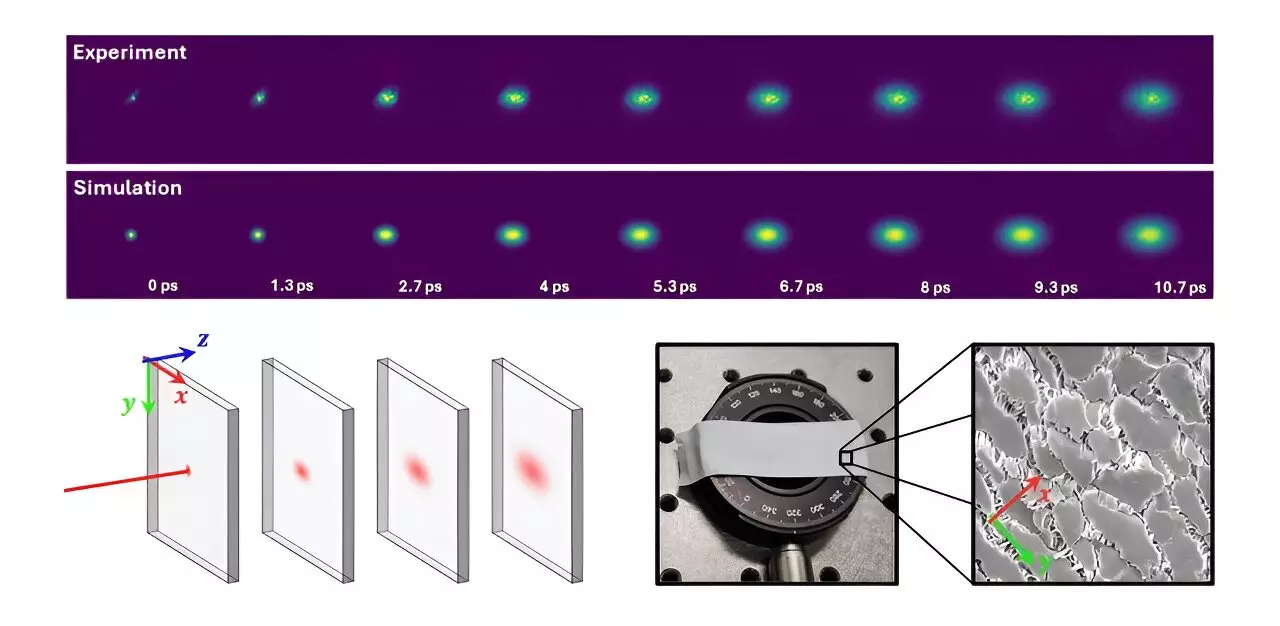In a plethora of scientific and industrial applications, understanding how light interacts with materials is critical. From enhancing medical imaging techniques to improving manufacturing processes, the ability to accurately assess light’s behavior is fundamental. Materials often exhibit a complex behavior termed “anisotropy,” wherein their optical characteristics vary based on directional aspects. This phenomenon poses challenges in measuring and modeling the optical properties accurately. Traditional approaches have often fallen short, leading to generalized conclusions that do not adequately represent real-world complexities.
Recent advancements are shedding light on this intricate domain. An innovative technique has emerged from the European Laboratory for Nonlinear Spectroscopy (LENS), aimed at studying anisotropic materials. Researchers within this institution have unveiled a method that integrates time-domain transmittance measurements with sophisticated Monte Carlo simulations. This pioneering approach enables scientists to capture the multifaceted behavior of light when it encounters different materials, thus enhancing our understanding of anisotropic properties.
The researchers specifically tested this new technique on two widely utilized anisotropic materials: Teflon tape and paper. Teflon, known for its effectiveness in industrial applications, and paper, characterized by its unique structural properties derived from aligned cellulose fibers, offer rich insights into the scattering phenomena that arise from anisotropic structures. By employing a transient imaging technique, the team observed the modulation of light patterns over time as they were exposed to ultrashort light pulses. This experimental setup was crucial for revealing the scattering characteristics intrinsic to these materials.
The results of the study were groundbreaking, uncovering significant variations in light diffusion across different directions within both Teflon and paper. For the first time, researchers were able to extract precise scattering tensor coefficients, which quantify how light scatters in various orientations. This achievement is notable because it reforms our understanding of scattering dynamics, emphasizing that materials cannot simply be categorized as isotropic without considerable oversight.
Dr. Lorenzo Pattelli, leading the research at the Italian National Institute of Metrological Research (INRiM), pointed out the importance of recognizing the anisotropic nature of materials. He highlighted the long-standing oversight in many studies that have either inadequately addressed this aspect or relied on isotropic assumptions for simplicity’s sake. These misconceptions have significant ramifications as they can lead to substantial errors in the understanding of material properties.
Dr. Pattelli’s commentary underscores a crucial transition towards embracing the inherent complexities of materials, suggesting that researchers take care to account for anisotropic behavior. He stated, “With the old isotropic modeling methods, we were left with potentially inaccurate representations of the unique scattering properties of various materials.”
The newly developed method is poised to revolutionize how we approach the characterization of complex materials, particularly those found in biological systems. By enhancing our ability to measure and model the optical properties of anisotropic materials accurately, this research could drive improvements in various fields, most notably in medical imaging. For instance, a more nuanced understanding of light scattering in biological tissues can lead to refinements in diagnostic imaging techniques, resulting in better patient outcomes.
Moreover, in the broader sphere of material science, the implications of this advancement could facilitate more precise applications in product development and quality control processes across industries. The ability to quantify and model the anisotropic properties of materials will undoubtedly enhance both the scientific community’s understanding and the practical aspects of material utilization.
This innovative approach represents a significant leap forward in the study of anisotropic materials. By recognizing and accounting for the intricate scattering behaviors that these materials exhibit, researchers are unlocking a deeper understanding of the fabric that governs interactions between light and matter. The convergence of refined measurement techniques and powerful simulation methods promises to pave the way for an array of advancements across scientific and industrial domains.


Leave a Reply